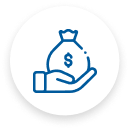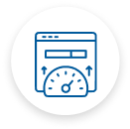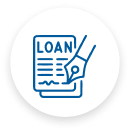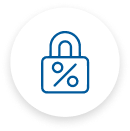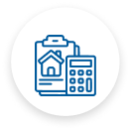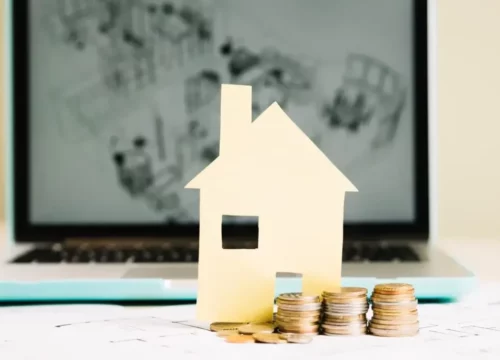HELOCs
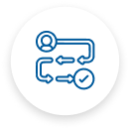
Experience
Experience in the mortgage industry since 1997.

Security
End-to-end security for your online mortgage application.

Features
You will get the best mortgage rate possible for your case.

Support
Support at all stages of the deal.
What is a HELOC?
A HELOC, or Home Equity Line of Credit, is a type of revolving credit that is secured by borrowers’ home equity. Essentially, a HELOC allows homeowners to borrow money against the equity they have built up in their home. HELOCs can be used for a variety of purposes, such as home renovations, debt consolidation, or other expenses.
HELOCs typically have variable HELOC interest rates, which means that the rate can fluctuate over time. HELOC’s also usually have a draw period during which you can access funds, and a repayment period during which you have to pay back what you have borrowed.You can choose the best home equity line of credit for you.
How does a HELOC Work?
A HELOC works by allowing homeowners to borrow money against the equity they have built up in their home. It works like a credit card secured (or collateralized) by the property. Here are the basic steps of how a HELOC works:
- Apply for a Home Equity Line of Credit: Homeowners can apply for a HELOC with a lender, such as a bank or credit union. The lender will evaluate the homeowners’ credit scores, income, and the amount of equity they have in their home to determine if they are eligible for a HELOC.
- Establish a credit limit: Once approved for a HELOC, the lender will establish a credit limit based on the homeowners’ equity in their home and other factors. This credit limit is the maximum amount the homeowner can borrow from the HELOC.
- Draw funds from the HELOC: Homeowners can draw funds from the HELOC as needed, up to the established credit limit. This can be done by writing a check, using a credit card or debit card linked to the HELOC, or transferring funds online.
- Repay the HELOC: After drawing funds from the HELOC, homeowners must make monthly payments to repay the borrowed amount, plus interest. HELOCs typically have a variable interest rate, which means that the interest rate, and thus monthly payment, can change over time.
- Repay the HELOC: After drawing funds from the HELOC, homeowners must make monthly payments to repay the borrowed amount, plus interest. HELOCs typically have a variable interest rate, which means that the interest rate, and thus monthly payment, can change over time.

Boris Cherner Mortgage Lender
Purchasing or refinancing your home is a complex undertaking that involves a number of participants and variables. I have been in the mortgage industry since 1997 and I understand the anxiety that comes with making the most expensive investment of a lifetime. My objective is to be your advisor, to educate you and to make the mortgage loan transaction as transparent and as stress-free as possible. I enjoy establishing personal connections and work mostly by referral. I thoroughly explain the process and available options, and guide my clients to make choices that best fit their needs and financial goals. Once the underwriting begins I communicate regularly and keep my clients apprised of the loan status from the beginning through the end. My relationship with clients does not end at the closing table. You are my client for life and I am always available to answer your questions and provide you with guidance.

Advantages and Disadvantage of a Home Equity Line of Credit
There are some pros and cons of HELOC for homeowners. Here are some of the key pros and cons to consider:
Advantages:
- Lower interest rates: HELOCs usually have lower interest rates compared to other types of loans, such as personal loans or credit cards, because they are secured by the borrowers’ real estate property.
- Flexibility: With a HELOC, homeowners can draw funds as needed, up to the established credit limit, and only pay interest on the amount borrowed.
- Tax benefits: Depending on the borrowers’ circumstances, interest paid on a HELOC may be tax-deductible.
- Can increase home value: Using a HELOC to pay for home renovations or improvements can increase the value of the home and potentially provide a return on investment.
Disadvantages:
- Risk of foreclosure: Because a HELOC is secured by the borrowers’ property, failure to make payments can result in the borrower losing their home.
- Variable interest rates: HELOCs often have variable interest rates that can change over time, which can result in higher monthly payments.
- Fees and closing costs: HELOCs can have fees and closing costs associated with them, which can add to the overall cost of the loan.
- Temptation to overspend: The ability to draw funds as needed can be a temptation to overspend, which can lead to increased debt and financial strain.
Free Consultation
Who is a HELOC Best For?
A HELOC can be a good option for homeowners who have built up equity in their home and have a specific need for funds. Here are some situations in which a HELOC may be a good fit:
- Home renovations: Homeowners who want to make improvements to their home, such as adding a new bathroom or updating the kitchen, may find a HELOC to be a good option. The funds can be used to pay for the renovations, and the increased home value can potentially provide a return on investment.
- Debt consolidation: Homeowners who have high-interest debt, such as credit card debt, may be able to use a HELOC to consolidate their debt and potentially save money on interest.
- Emergency expenses: A HELOC can provide a source of funds for unexpected expenses, such as medical bills or car repairs.
- Education expenses: Homeowners who have children attending college or who are pursuing their own education may find a HELOC to be a good option for paying for tuition and other expenses.
- Business expenses: Homeowners who own a business or are self-employed may want to use a HELOC for financing business expenses.
HELOC in Place of New Purchase Down Payment
It is possible to use a HELOC to make a larger down payment on a new home and avoid paying PMI (Private Mortgage Insurance). There are some important considerations to keep in mind:
- Lenders may have restrictions: Some lenders may not allow you to use a HELOC as a down payment, so it is important to check with your lender before making any plans.
- Increased debt load: Taking on a HELOC to use for a down payment will increase your overall debt load and monthly payments. Be sure to carefully consider your ability to make the HELOC payments in addition to your mortgage payments.
- Interest rate: The interest rate on a HELOC may be higher than a traditional mortgage, so be sure to compare the rates and terms of different options to ensure that you are making the best choice.
- Market conditions: If housing prices are rising quickly, using a HELOC for a down payment may make sense as it could help you secure a property before prices increase further. However, if the housing market is unstable or declining, using a HELOC for a down payment could put you at risk of owing more than the value of the home.
HELOCs Reviews

HELOC Requirements
Home equity line of credit requirements can vary depending on the lender, but here are some general requirements that homeowners can expect:
- Sufficient home equity: In order to qualify for a HELOC, homeowners must have sufficient equity in their home. Typically, lenders require that homeowners have at least 15-20% equity in their home, but this can vary.
- Good credit score: Lenders will evaluate the homeowners’ credit scores to determine their eligibility for a HELOC. Generally, a higher credit score will result in better terms and a lower interest rate. Cost of HELOC can vary.
- Adequate income: Lenders will want to see that homeowners have a stable source of income and are able to make the monthly payments on the line of credit home equity.
- Appraisal: Lenders will require an appraisal of the home to determine its current market value and to calculate the amount of equity the homeowners have in the home..
- Other requirements: Lenders may have additional requirements, such as a minimum loan amount or a maximum debt-to-income ratio.
How to Get a Home Equity Line of Credit
Here are the general steps to get a HELOC:
- Check your credit score: HELOC lenders will look at your credit score to determine your eligibility for a HELOC and the terms you will qualify for. Check your credit score and credit report to ensure there are no errors or issues that could affect your ability to get a HELOC.
- Determine your home equity: Lenders will require that you have sufficient equity in your home to qualify for a HELOC. To determine your home equity, subtract your outstanding mortgage balance from the current value of your home.
- Shop around: Research different lenders to compare the terms and fees of their HELOC options. Look at interest rates, fees, repayment terms, and other factors that could affect the cost and flexibility of the loan.
- Apply for the HELOC: Once you have chosen a lender, you can apply for the HELOC. You will need to provide documentation of your income, employment and other financial information. The lender will also require an appraisal of your home to determine its current value.
- Approval and closing: If you are approved for the HELOC, the lender will provide you with a credit limit based on the amount of equity in your home. You can then draw funds from the credit line as needed. The closing process will involve signing the loan documents and paying any closing costs and fees.
Apply for a Home Equity Line Of Credit
A HELOC can serve as a great financial tool, but you need to carefully review the requirements of different lenders and to compare the terms and fees of different HELOC options before applying for one.
Please remember that a HELOC is secured by your property and failure to make payments on a HELOC can result in the loss of your home, so it is important to carefully evaluate your financial situation and ability to make the payments before taking out a HELOC. Please reach out to me, Boris Cherner, a mortgage lender, for additional information on HELOCs at 312-296-4175 or email me at connect@borislending.com. Additionally, I offer a variety of mortgage options to suit your needs, including adjustable-rate mortgages, FHA loans, fixed-rate mortgages, Jumbo loans, VA loans, and more. Together, we can explore and select the perfect mortgage solution tailored to your financial situation and goals. I lend in all 50 states and I am never too busy for your referrals!!
Useful Articles
HELOCs FAQ
Is HELOC a good idea?
A HELOC can be a great idea if you have equity in your property and wish to use it for making home improvements, purchasing bit ticket items, consolidating debt, paying for education or business expenses.
How do I qualify for a HELOC?
Applying for a HELOC is similar to applying for any other mortgage loan. You need to meet the lender’s credit, income and equity requirements. Once approved, the lender will provide you with a credit limit and you draw funds as necessary.
How much HELOC can I get?
The HELOC amount that you can get depends on the amount of equity you have in your property and your credit and income qualifications. Once the lender reviews your situation they will determine the size of the credit line you qualify for.
How are HELOC payments calculated?
Monthly payments on the HELOC are based on the amount drawn and not on the total amount of the HELOC. If no funds are drawn on the HELOC then no monthly payment is required.
Contact me
Info






